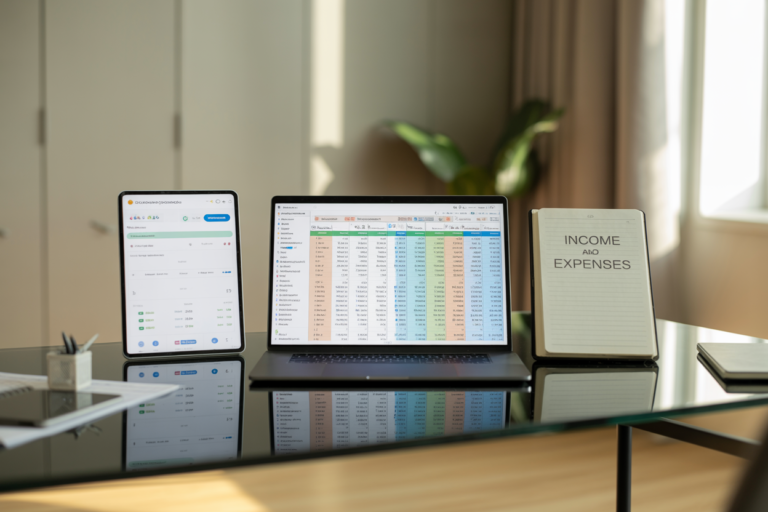How to Set Up a Simple Bookkeeping System — Even If You Hate Numbers
Alright, I get it — you started your business to do what you love, not track receipts and reconcile spreadsheets. But here’s the truth: part of being a business owner is knowing where your money is going and how profitable you really are.
If you’re ignoring your finances, it’s easy to end up in a bad spot — like not knowing if you can afford to pay yourself or accidentally overspending on things that don’t move your business forward.
Don’t worry, though. Bookkeeping doesn’t have to be scary (or boring). In this post, I’ll show you how to set up a simple system that works — even if numbers aren’t your thing.
First Rule of Bookkeeping: No Commingling!
You might be wondering, what even is commingling?
Commingling means mixing your personal and business income or expenses — like using the same bank account to buy groceries and pay for your website hosting. It may not seem like a big deal, but trust me: it is.
Why this matters:
- There can be legal consequences if you’re ever audited.
- It makes your bookkeeping 10x harder and less accurate.
- It’s the #1 rule in both bookkeeping and accounting — for a reason.
Your action step:
Open a separate business bank account now if you haven’t already.
Only use it for your business income and expenses. No exceptions!
Tip 2: Track Income and Expenses Regularly
You can’t grow what you don’t track.
Waiting until tax time (or panic season) to sort through receipts and emails? That’s a fast track to burnout and missed opportunities.
Instead, set a regular time — daily, weekly, whatever works for you — to log your income and expenses. The key is consistency over perfection.
Tools you can use:
- A simple Google Sheet
- Free software like Wave
- Paid tools like QuickBooks if you want to get fancy
This habit doesn’t have to take more than 10 minutes. Pour your coffee, review your income/expenses, and go on with your day.
Tip 3: Create Your Bookkeeping Spreadsheet (Right Now!)
Let’s not just talk about tracking income and expenses — let’s do it.
If you’re familiar with Excel, feel free to use that. But if not (or you want something easy to access anywhere), go to sheets.google.com and create a free Google Sheet.
Here’s what to do next:
- Title your sheet with the current month (e.g., “May 2025”).
- At the bottom, create two tabs:
- Income
- Expenses
- In each tab, include these columns:
- Date
- Description
- Amount
- Category
- Payment Method (optional but helpful)
Pro tip: You don’t need a fancy system. You just need to start.
This simple setup will make tax time, financial planning, and decision-making 1000x easier.
Your Turn:
What’s your biggest struggle with bookkeeping right now? Drop a comment below — I’d love to help!
And if you found this post helpful, don’t forget to bookmark it or share it with a friend who needs it!



